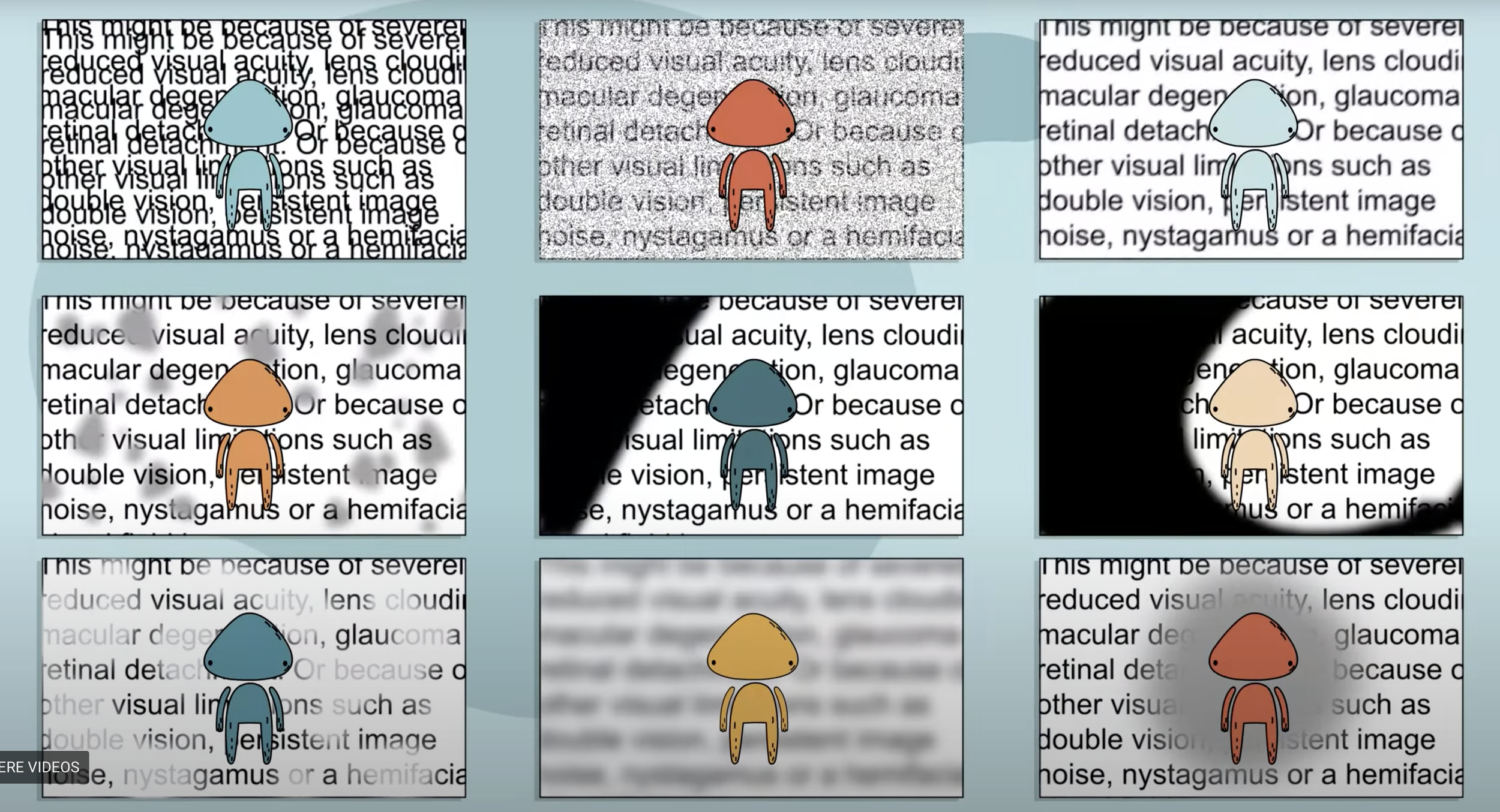
Accessibility of our products
The 2-Senses-Principle
The 2-senses principle requires that any information conveyed visually or auditorily is always prepared and offered for at least one additional alternative sensory channel.
We are committed to producing our media products, mainly videos and animations, in accordance with the Web Content Accessibility Guidelines[1] at Level AA. Wherever possible, we strive for conformance level AAA.
For a deeper understanding of the guidelines, we refer you to the resources of the Web Accessibility Initiative (WAI) of the W3C: Making Audio and Video Media Accessible[2].
[1] https://www.w3.org/WAI/WCAG22/quickref/?versions=2.1[2] https://www.w3.org/WAI/media/av/A brief summary of the why and wherefore
[source: User Experiences and Benefits to Organizations | Web Accessibility Initiative (WAI) | W3C]It’s useful to first understand the user experiences of people with disabilities. Then you’ll know the “why” behind the media accessibility requirements in this resource. For example, a person who is Deaf can’t hear the audio, so you need to provide important audio information in another form.
Many people who are Deaf can read text well. They get the audio information from transcripts or captions. Some people prefer sign language.
Some people who are hard of hearing like to listen to the audio to hear what they can, and have captions to fill in what they can’t hear adequately.
Some people who have difficulty processing auditory information also use captions. Many use transcripts so they can read at their own pace.
Some people who are blind or have low vision can’t see videos well or at all. They use description of visual information to understand what’s going on visually. (Description is called audio description, video description, or described video.)
Some people who are blind use a screen reader and braille to read descriptive transcripts that include the audio and visual information as text.
Some people cannot focus and comprehend auditory or visual information when there are changing visuals. For most videos, they also need descriptive transcripts.
Some people cannot use their hands and use speech recognition software to operate their computer, including the media player. And people who are blind need the media player to work without a mouse.
Some people use multiple accessibility features simultaneously. For example, someone might want captions, description of visual information as text, and description in audio.
Specifically, we adhere to the following requirements for video
We mainly produce educational videos. Our video productions include combinations of video recordings, animations, stills as well as interactive elements.
The visual content of our video productions serves to visualize and underline the linguistically conveyed content. We produce script-based videos with integrated description.
Applied WCAG success criteria: Understanding SC 1.2.3, Understanding SC 1.2.5We deliver all video productions with caption files and text transcripts.
Applied WCAG success criteria: Understanding SC 1.2.2We ensure that there is sufficient contrast between the text (and important visual content such as data points in graphics) and the background.
Applied WCAG success criteria: Understanding SC 1.4.3To avoid epileptic seizures, our videos do not contain any sequences with strong flashes or violent flashes (less than 3 flashes per second). If it does, a corresponding warning is displayed at the beginning of the video.
Applied WCAG success criteria: Understanding SC 1.3.1When recording video with people speaking, we make sure that the face is clearly visible and in good light.